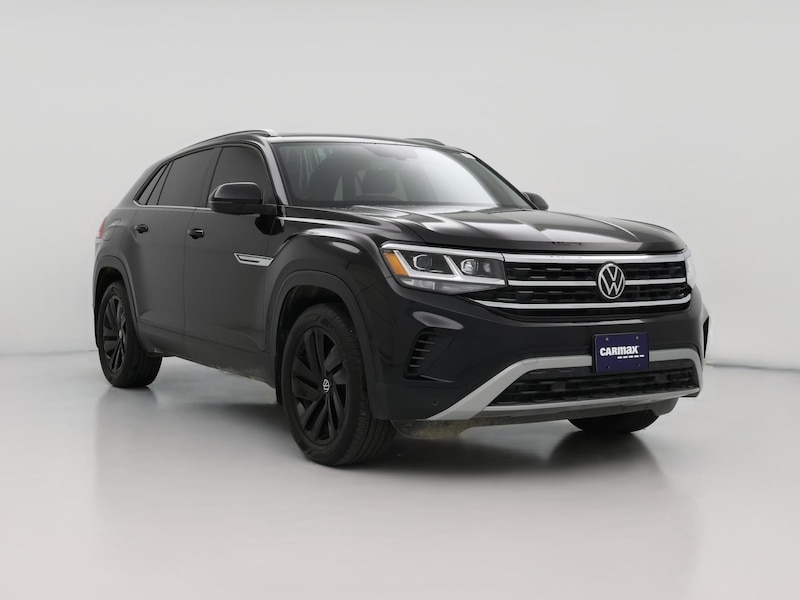2021 Tesla Model 3 review
Tesla Model 3 highlights
Customer rating
RepairPal reliability rating
(data not available)
Pros
- More battery range for all 2021 models
- Comfortable, spacious cabin
Cons
- Touchscreen for all secondary controls can be distracting
- Apple CarPlay® and Android Auto™ still not offered
Battery range (EPA estimate)
263 miles
Pricing for current inventory
From $23,998*
Shop with your budget in mind
Getting pre-qualified lets you shop with personalized monthly payments, and it doesn't impact your credit score.
Facing more competition, the Tesla Model 3 is improved for 2021
Tesla has had a huge success with its Model 3, but rival manufacturers are chasing the popular EV, so it has made some changes for 2021. The key revisions relate to the 2021 Model 3's range and efficiency, and Tesla has addressed criticism of interior and exterior trim quality by replacing it. There's also a new standard integrated wireless charger, but your smartphone will only connect to your Model 3 via Bluetooth®. Tesla doesn't offer smartphone integration through Apple CarPlay® and Android Auto™. That’s arguably one of the biggest tech failings in the otherwise tech-laden Model 3.
The Standard Range Plus model now has an EPA-estimated range of 263 miles (up from 250 miles), while both the all-wheel-drive Long Range and Performance models boast estimated ranges in excess of 300 miles. Add the accessibility to Tesla's Supercharger infrastructure, and the Model 3 is ready for a road trip. Every Model 3 is quick and enjoyable to drive, and the cabin is spacious and comfortable. The huge 15-inch touchscreen, meanwhile, bundles everything except the driving controls for a sleek look and relatively simple operation. But it can be a touch distracting to use while you're driving. While there's more competition now from cars like the Ford Mustang Mach-E, Kia Niro, and Volkswagen ID.4, the Tesla Model 3 remains a firm favorite.
All Tesla Model 3 years
Not sure what year to select? Learn about each Tesla Model 3 generation from 2017 to 2026
What is new for the 2021 Tesla Model 3?
- The Standard Range trim has been discontinued for 2021.
- Model 3 trims have been upgraded with Heated Steering Wheel as standard equipment this year.
- The Standard Range Plus trim now comes with Rear Seat Heaters as standard equipment.
2021 Tesla Model 3 trims
Curious how Tesla Model 3 trims differ? Use our side-by-side vehicle comparison to see the differences and similaritiesStandard Plus: Includes 18-inch wheels, simulated leather upholstery, heated front seats, power trunk lid, panoramic glass roof, 15-inch touchscreen, navigation, four USB ports, wireless device charging, forward collision warning, pedestrian detection, blind-spot monitoring, adaptive cruise control, surround-view parking camera.
Long Range: Adds all-wheel drive, heated rear seats, immersive sound 15-speaker premium audio system
Performance: Adds 20-inch wheels, aluminum-alloy pedals, performance-tuned brakes, carbon fiber rear spoiler, sports suspension, track mode.
Tesla Model 3 photos
5 reasons to buy the 2021 Tesla Model 3
1. Built around the driver
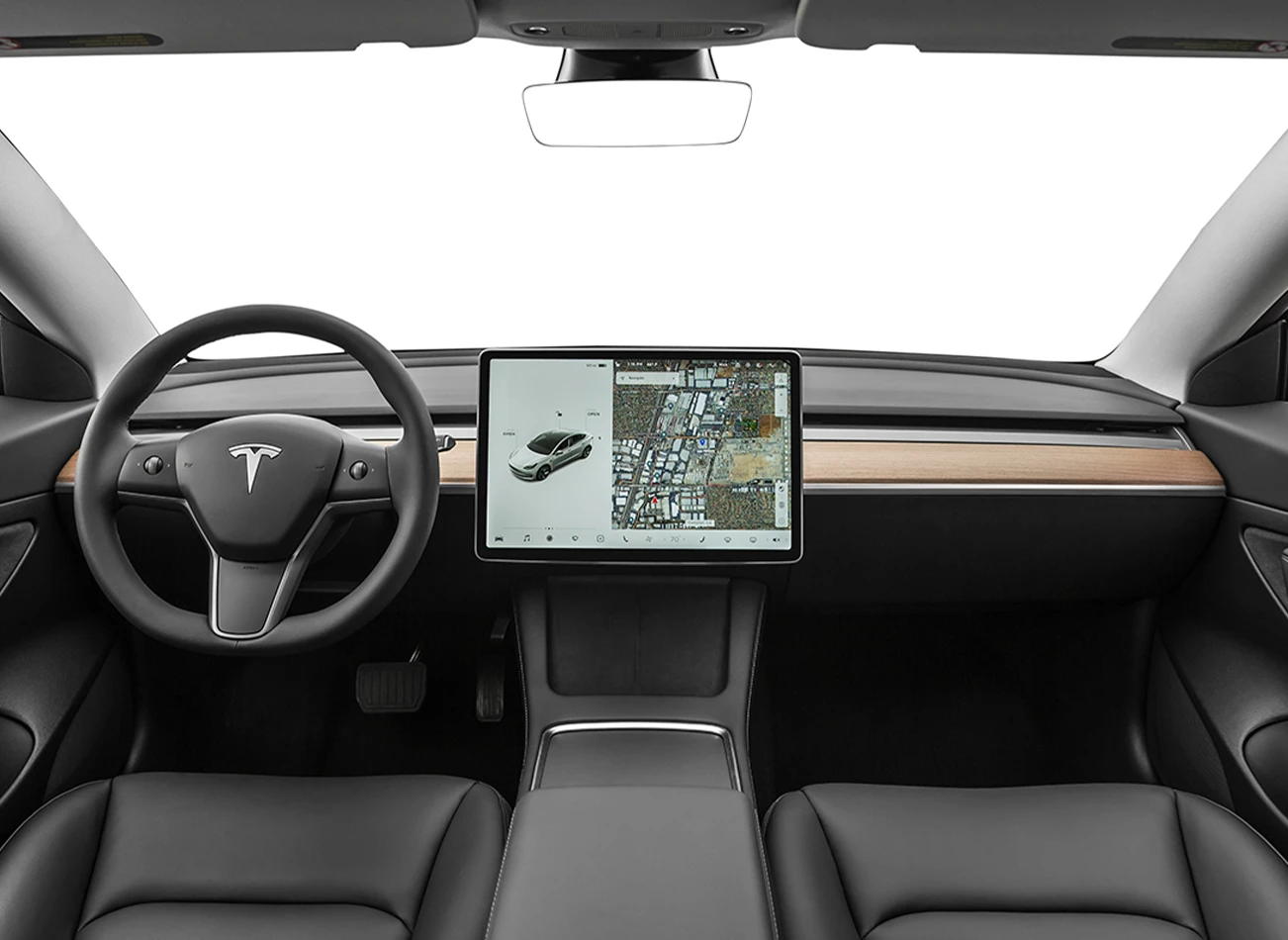
At the heart of the 2021 Model 3's interior is a huge 15-inch touch screen. It's from here you can control most of the vehicle's features, keep an eye on your range, and find convenient charging stops. The software running the screen is designed to be continually updated, meaning you'll have access to the latest updates and new features without having to lift a finger. The rest of the cockpit is just as well thought out with a panoramic glass roof to let in lots of light and a zen-like minimalist interior that's a pleasure to spend time in.
2. Lots of electric miles
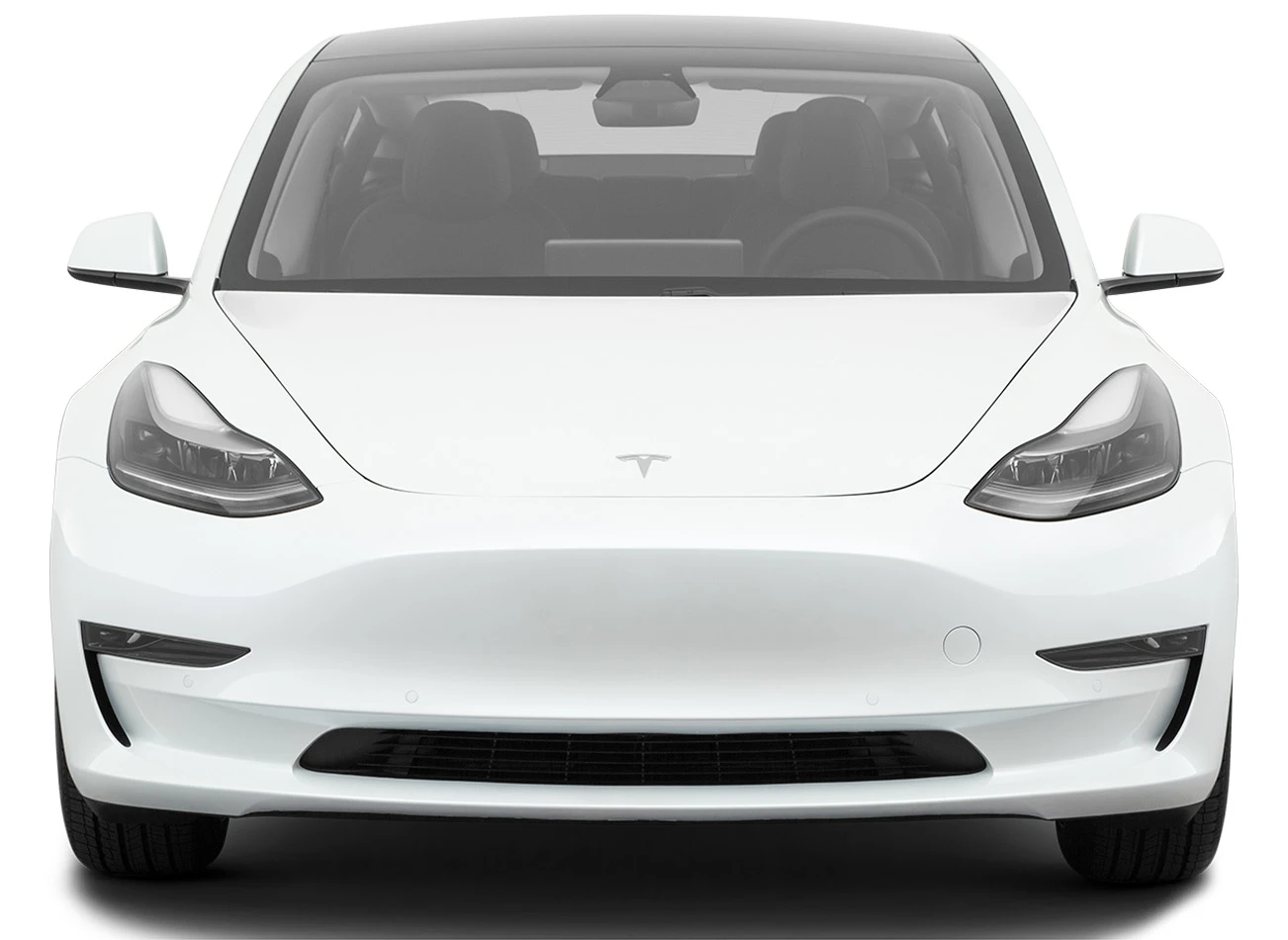
Electric vehicles have come a long way in the last five years and the 2021 Tesla Model 3 is no exception. With an EPA-estimated range of 263 miles on Standard Range Plus models (when fully charged), daily errands and trips out for work are covered.
If that's not quite enough, look out for the Long Range model, which gets an EPA-estimated 353 miles on a full charger—road trip, anyone?3. All-wheel drive
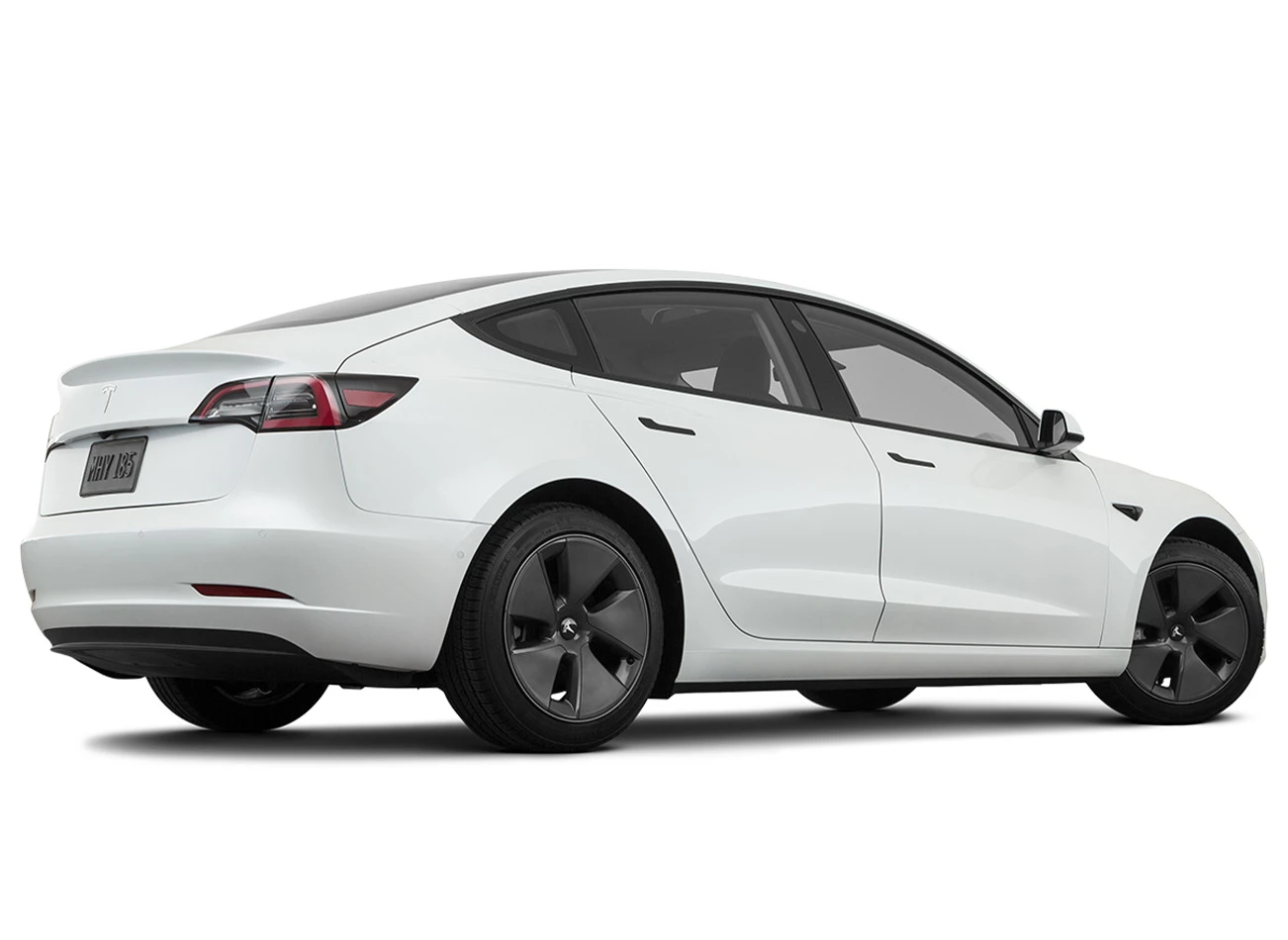
Now with the option of a second motor powering the rear wheels, Tesla Model 3 owners can get all-wheel drive as standard on Long Range and Performance models. This dual-motor setup means superior grip when cornering or when tackling inclement weather. This is particularly useful on the Performance model when you're taking advantage of its sport suspension and incredible acceleration (3.1 seconds to 60 mph, according to the manufacturer, when new).
4. Cargo space all around
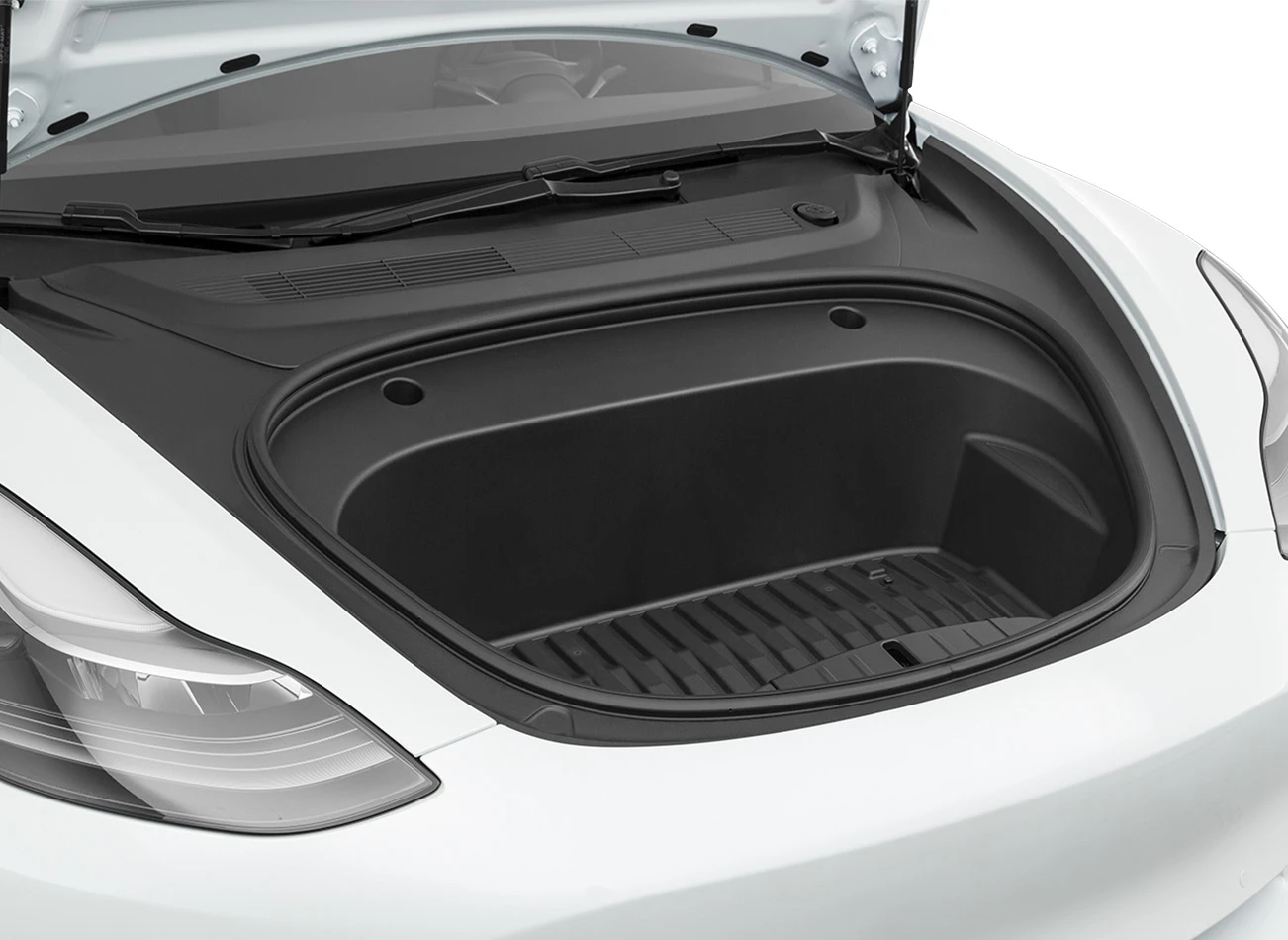
Not only do you get 15 cu-ft of trunk that is ready to swallow up all your stuff—you also get a 'frunk'. This front trunk gives you additional storage space in the area where your engine would normally go. If that's not enough, you can fold the rear seats for more useable space and could even use the 2021 Model 3 for car camping if that's your style.
5. Clever tech
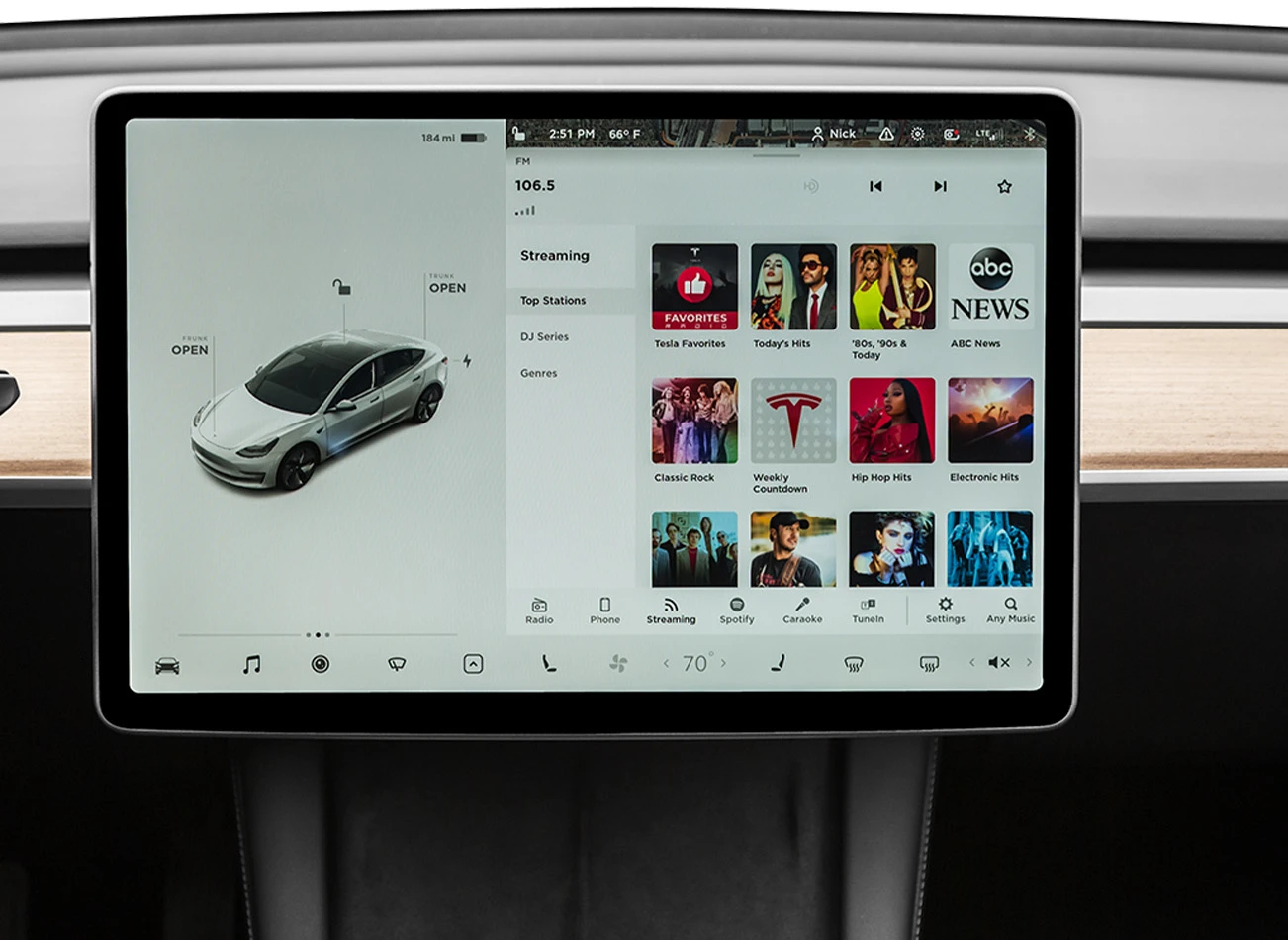
All Teslas are classed as software-defined vehicles. This means the 2021 Model 3 is built with tech in mind — and it shows. The optional self-driving abilities are just one example of this but you'll love clever features such as the built-in dashcam and Sentry Mode — when enabled, this uses the cameras all around the vehicle to record while it's parked. You'll also get parallel and perpendicular park assist as standard but you can upgrade this to allow the car to park itself.
Similar vehicles
If you're interested in the 2021 Tesla Model 3, you should also check out these similar vehicles from Previous generation years.
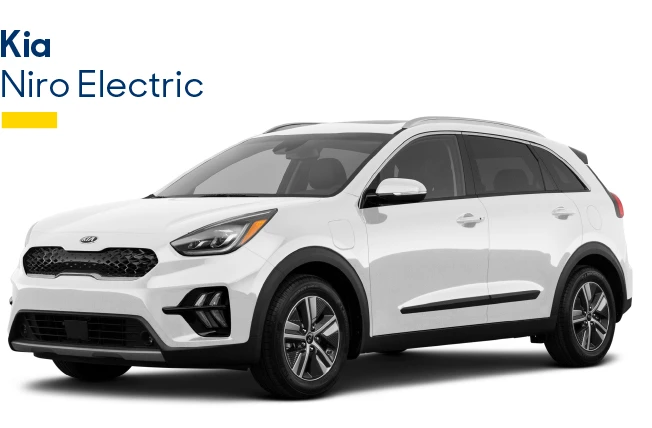
With a 64-kWh battery and a 201-hp electric motor, the 2019–2021 Kia Niro EV is a great small electric SUV. On a full charge, you'll get an EPA-estimated 239 miles of range, which is plenty for life's little adventures.
There are also plenty of appealing features that come as standard to enhance the driving experience and the appeal of this vehicle.The 2019–2021 Kia Niro EV EX base trim features as standard:
Android Auto™ and Apple CarPlay® connectivity
Rear cross-traffic alert and blind-spot detection
Touchscreen infotainment system

If you need seating for five and an exterior design that'll turn heads, the 2021 ID.4 is a great choice. The 82-kWh battery model is available with either rear-wheel drive or all-wheel drive, so you can find the one that fits your needs as a driver. 2021 Pro models will do an EPA-estimated 260 miles of range (when fully charged) but no matter how far you go, you'll love the high-tech interior and comfortable seats.
The 2021 Volkswagen ID.4 Pro base trim includes these standard features, and more:
Heated front seats
Forward collision mitigation
10-inch touchscreen
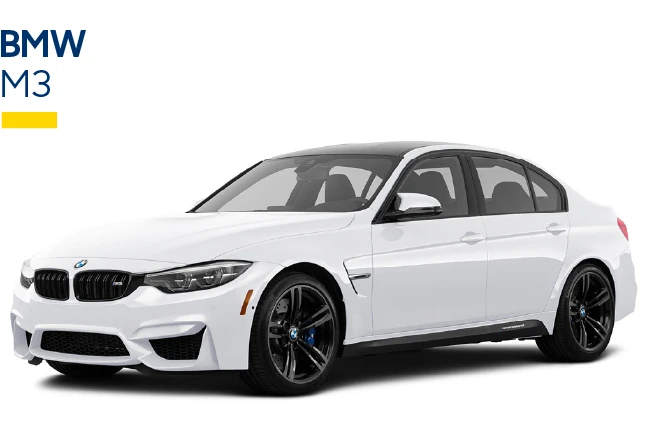
If you want to stick with a gasoline-powered vehicle but still want quick acceleration and good looks, the BMW M3 might suit you. Look out for the revised six-cylinder engine on 2021 models for up to 503 horsepower, depending on the trim you choose. The standard 2021 M3 will do zero to 60 in 4.1 seconds but you've got the option to go for the Competition model, which brings that down to 3.8 seconds (according to the manufacturer, when new).
The 2017–2021 BMW M3 standard model includes these standard features:
Traction and stability control
Harman Kardon® sound system
Keyless ignition and entry
Shop with your budget in mind
Getting pre-qualified lets you shop with personalized monthly payments, and it doesn't impact your credit score.
Ratings & reliability
Tesla Model 3 features and specs
Curious how Tesla Model 3 trims differ? Use our side-by-side vehicle comparison to see the differences and similarities
Standard Range Plus 2WD 4D Sedan
Standard Features
- ABS Brakes
- Air Conditioning
- Alloy Wheels
- AM/FM Stereo
- Automated Cruise Control
- Automatic Transmission
- Auxiliary Audio Input
- Blind Spot Monitor
- Bluetooth Technology
- Front Seat Heaters
- Heated Mirrors
- Lane Departure Warning
- Leatherette Seats
- Memory Seat(s)
- Navigation System
- Overhead Airbags
- Parking Sensors
- Power Hatch/Deck Lid
- Power Locks
- Power Mirrors
- Power Seat(s)
- Power Windows
- Rear Defroster
- Rear View Camera
- Side Airbags
- Skylight(s)
- Smart Key
- Traction Control
- Automated Parking
- Heated Steering Wheel
- Rear Seat Heaters
Drive Wheels
Rear Wheel Drive (2WD)
Engine size
0.0L
Engine type
Electric
Wheelbase
113.2"
Overall length
184.8"
Width
72.8"
Height
56.8"
Leg room
F 42.7"/R 35.2"
Head room
F 40.3"/R 37.7"
Front tires
P235/45WR18
Rear tires
P235/45WR18
Seating capacity
5
Transmission
Automatic
2021 Tesla Model 3 FAQ
The Model 3 Standard Range Plus with rear-wheel drive can produce 283 hp. The 2021 Long Range Dual Motor AWD Model 3 achieves 449 hp, while the range-topping Performance Dual Motor AWD Model 3 can deliver 480 hp. That's more than enough for most drivers.
Tesla's Ludicrous mode increases peak torque by approximately 60%. And while it is not currently available on the Model 3, you can still expect it to deliver some stunning zero to 60 stats. The 2021 Performance Model 3 can achieve zero to 60 in 3.1 seconds (according to the manufacturer, when new).
Running errands and visiting relatives across town are the kind of journeys that rarely require the power and acceleration that a Tesla typically delivers. Try Chill mode instead. Selected from the touchscreen's driving options, it will smooth out your ride by limiting acceleration for a more modest ride experience. When else to use it? It's useful for inexperienced drivers, teens, and when weather dictates the road conditions.
All 2021 Model 3s comes standard with heated front seats. Choose the Long Range or Performance Model 3 for heated rear seats too. If the hardware is already fitted, then heated rear seats are also available via an over-the-air upgrade activation for the Standard Plus Model 3.
More about the 2021 Tesla Model 3
Color options
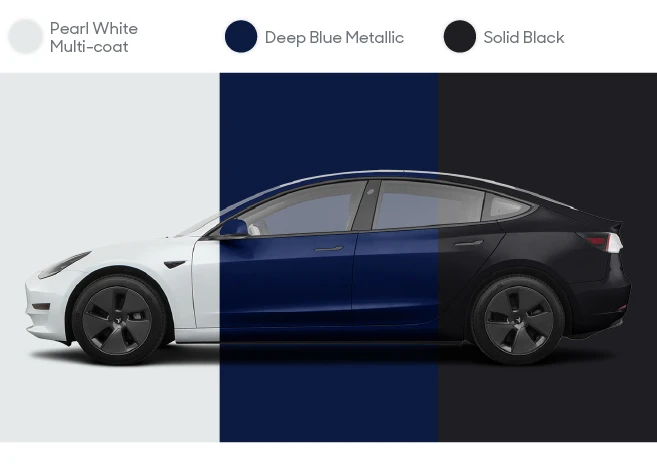
Exterior colors:
Deep Blue Metallic
Midnight Silver Metalic
Pearl White Multi-coat
Red Multi-Coat
Solid Black
Interior colors:
Black
Black/White
Interior details
The 2021 Tesla Model 3 doesn't look like anything else out there. The cutting-edge interior is minimalist with a focus on driving. The entire roof is made of glass, which brings you that much closer to nature and lets plenty of light into the cabin. All tasks are controlled through the center touchscreen, which also includes satellite navigation and other handy features.
Child seat details
The Model 3 has two full sets of LATCH anchors for the second-row outboard seats, with a further upper tether only for the slim middle seat. The exact location of each lower anchor is identified by a child safety seat identification button. While easy to identify, the bars are set quite deeply between the seat cushion and backrest. The upper tether points are on the rear shelf and easily identified. The outboard seats can accommodate convertible, booster, and infant seats.
Performance
As with all electric vehicles, the 2021 Model 3 offers quick zero-to-60 times, even from the base model. The Standard 2021 Tesla Model 3 will do the sprint in 5.3 seconds; the Long Range model in 4.2 seconds; and the top-of-the-line performance in just 3.1 seconds (all according to the manufacturer, when new).
If top performance is your goal, it's the Performance model you should look out for as it has all-wheel drive for increased grip, sports suspension, and a track driving mode. This model gets an EPA-estimated 315 miles of range on a full charge.
If maximum range is more important to you, the Long Range model is the right choice. It still has all-wheel drive but will go an EPA-estimated 353 miles on a full charge.Year comparisons
2017–Present Tesla Model 3 (First Generation)
Tesla doesn't distinguish its vehicles by model year in the way many other manufacturers do. This is because it regularly offers over-the-air software updates, which can add new features, upgrade current ones, or unlock dormant components.
Notable hardware and trim changes do happen of course, including the introduction of the Standard Plus trim in 2019 and a boost to range figures in 2020. The most significant updates are noted for the 2021 model include a style refresh for the interior and exterior, further range increases, and a new noise-reducing window design.
For 2022, the Model 3 Standard Range Plus is renamed to Rear-Wheel Drive. Heated rear seating also becomes standard.
Research other vehicles
- Used 2021 Electric Tesla near me for sale
- Used Tesla Model 3 near me for sale
- Used 2021 Tesla Model 3 near me for sale
- Used 2021 Tesla Model 3 Long Range near me for sale
- Used 2021 Tesla Model 3 Performance near me for sale
- Used 2021 Tesla Model 3 Standard Range Plus near me for sale
- Used 2021 Tesla Model S near me for sale
- Used 2021 Tesla Model Y near me for sale
- Used 2021 Electric Tesla Model Y near me for sale
- Used 2021 Tesla Model Y Long Range near me for sale
- Used 2021 Tesla Sedans near me for sale
- Used 2021 Tesla SUVs near me for sale
- 2025 BMW M3 review
- 2023 BMW X4 review
- 2023 Chevrolet Silverado 1500 review
- 2024 Chevrolet Silverado 1500 review
- 2012 Chevrolet Silverado 2500 review
- 2016 Dodge Challenger Hellcat review
- 2017 Dodge Challenger Hellcat review
- 2018 Dodge Challenger Hellcat review
- All things EV
- 2025 Mercedes-Benz GLS580 review
- 2025 Mercedes-Benz GLS63 AMG review
- Used Tesla buying guide
- 2025 Tesla Model 3 review
- 2017 Tesla Model 3 review
- 2018 Tesla Model 3 review
- 2019 Tesla Model 3 review
- 2020 Tesla Model 3 review
- 2022 Tesla Model 3 review
- 2023 Tesla Model 3 review
- 2024 Tesla Model 3 review
- 2025 Toyota Prius review
- 2025 Toyota Prius Plug In Hybrid review
We hope you found this information helpful. This content is intended to inform and is not meant to indicate that a particular vehicle is currently available or recommended for you.
Statements of fuel economy or EV range are based on EPA and other third-party estimates for vehicles when new. Fuel economy and EV range will degrade with time and vary based on age, driving conditions, vehicle history, and other conditions. See fueleconomy.gov for more info.
Unless otherwise noted, information related to featured vehicles comes from third-party sources, including manufacturer information. Product and company names may be trademarks or registered trademarks of third-party entities. Use of them does not imply any affiliation with or endorsement by these entities. By clicking on any video links, you will be taken to a third-party site maintained by YouTube, Inc.
We make every effort to provide accurate information, but please verify before purchasing.







